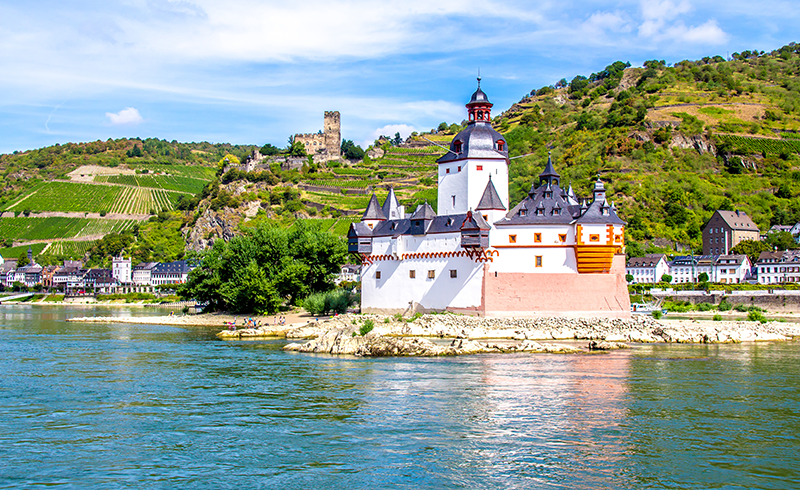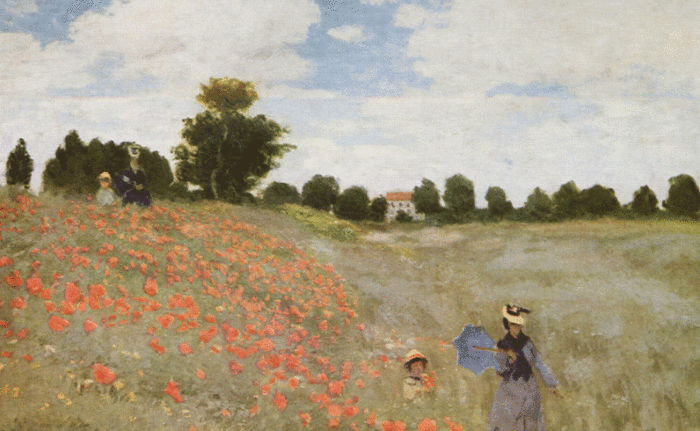This month, the Houston Symphony presents a two-week Schumann Festival featuring the great Romantic composer’s symphonies, concertos, chamber music, songs, and more. In this post, discover Schumann’s sunny Symphony No. 3. Nicknamed the “Rhenish” Symphony, it was composed while Schumann was living near the scenic Rhine River.
Composed in just over a month in November 1850, Schumann’s Third Symphony dates from the beginning of his tenure as municipal music director in Düsseldorf, a town situated on the famously scenic Rhine River. The nickname “Rhenish”—having to do with the Rhine and its surroundings—quickly attached itself to the work. Although this moniker did not derive from the composer himself, Schumann wryly noted that the symphony “perhaps reflects something of Rhenish life here and there.”
Indeed, Schumann remarked of the symphony that “I wished popular elements to prevail here, and think I have succeeded.” Clara, too, noted that “on the whole, the symphony, and especially the second and third movements, is easily accessible to laymen.” This trend in Schumann’s music may also have been reflected in his plans to write “a thoroughly folk-like” oratorio based on the life of Martin Luther that would appeal to “peasants and burghers” alike soon after the symphony’s completion. Though the oratorio never materialized, the symphony brilliantly evokes a “folk-like” atmosphere and has maintained a broad appeal since its February 1851 premiere.
Beethoven, too, was a likely source of inspiration; like Beethoven’s Eroica, this symphony is in E-flat major and begins in triple meter. Rather than evoke the military heroics of the Napoleonic era as Beethoven does, this joyous, surging music seems more like a force of nature—perhaps the River Rhine itself. The opening idea of the symphony overflows the bounds of the music’s barlines: the main motif strongly implies a 3/2 meter before falling into the flowing 3/4 indicated by the time signature:
https://www.youtube.com/watch?v=VOliHAx_OBo
Though Schumann introduces some contrasting, subsidiary ideas, this main theme is the focus of the movement. Schumann develops it obsessively, almost as if this were a piece of baroque music with one main expressive “affect.”
As Clara noted, the second movement finds Schumann at his most popular with a folksong-like melody introduced by bassoons, violas, and cellos. Variations on this lilting theme alternate with episodes of contrasting characters, ranging from delicate to mysterious. Though not strict, these contrasting episodes also in some ways resemble variations on the main theme, allowing the melody to resurface at unexpected moments.
The slower third movement has three main ideas: the first is the dolce (“sweet”) melody introduced by clarinets and bassoons; second is a gently pulsing figure for the violins; last is a rich, singing theme for violas. Throughout, the pulsing figure acts as a bridge between the two main melodies as they drift through the orchestra.

Traditionally, symphonies have only four movements, but this one has five. The fourth movement is usually regarded as the “extra” one, intervening between the slow movement and the finale, and it is perhaps the most remarkable of all. When the symphony was first performed, it bore the title “In the character of the accompaniment to a solemn ceremony,” although Schumann rescinded this description when the symphony was published. According to the concertmaster of the Düsseldorf orchestra, the movement was inspired by Schumann’s visit to the Cologne Cathedral. Though Schumann did not witness it, a solemn ceremony did take place there shortly after his visit when a bishop was elevated to the rank of cardinal. The building itself has an interesting parallel with the music. Though the cathedral had been left incomplete after initial construction in the medieval period, in 1842 civic minded Colognians decided to finish the high-gothic edifice according to the original plans, albeit using modern construction techniques. Similarly, Schumann conjures an ancient atmosphere with contrapuntal textures colored by the full resources of a nineteenth century orchestra (including trombones, who make their first entrance in this movement). The result is a haunting, Romantic evocation of the past.
The popular tone returns in the festive finale, which presents a string of delightful melodic ideas that are then developed and reprised. The movement builds to a climactic brass chorale, after which the music becomes faster and faster, bringing the symphony to a thrilling ending. —Calvin Dotsey
Don’t miss Schumann’s Rhenish Symphony at the Houston Symphony’s Schumann Festival! Learn more and get tickets.



